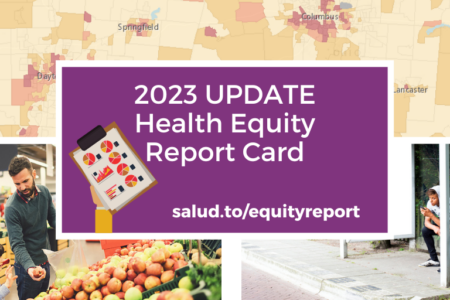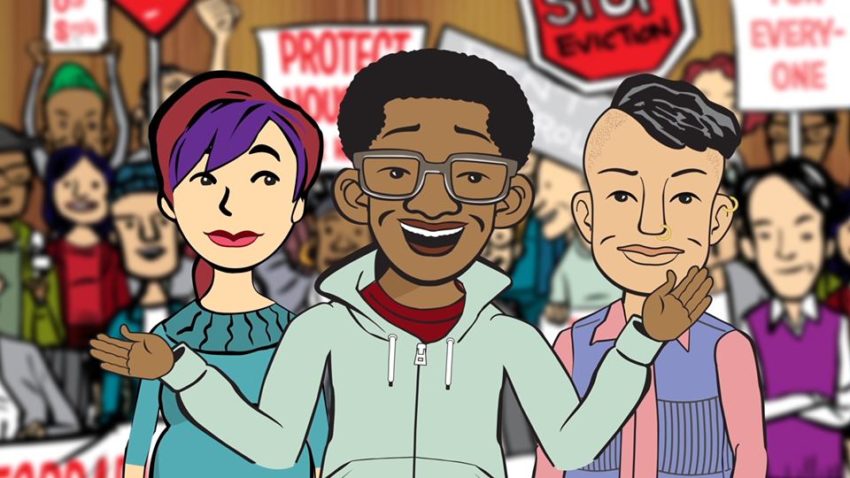
Share On Social!
Media producers Joseph Smooke and Dyan Ruiz have seen the harsh impact of unaffordable housing on Latino families in San Francisco.
Rents rise. Wages don’t. Latinos get priced out of their homes—forced to move further away from health-promoting assets like jobs, transit, and medical care.
Many people don’t know why this happens, or what to do.
Smooke and Ruiz, who created a media group to advocate for equitable public policies, wanted to empower families who face housing crises and build public demand for solutions.
So they went to the drawing board—literally.
San Francisco and Unaffordable Housing
Looking for an affordable place to live in San Francisco is like searching for a needle in a haystack.
Especially in places like the city’s Mission District.
The district is a traditionally Latino neighborhood where most rent their homes. The technology boom brought in a young, high-end population, causing property values and rent prices to rise. Local Latinos and other low-income groups, no longer able to afford rent, move out or get evicted from homes they’ve lived in for decades.
In some parts of town, a two-bedroom apartment rents for more than $3,000 a month, says the National Low Income Housing Coalition.
Housing affordability is an issue facing Latinos across the country, according to a Salud America! research review.
Smooke and Ruiz know housing is a complex issue.
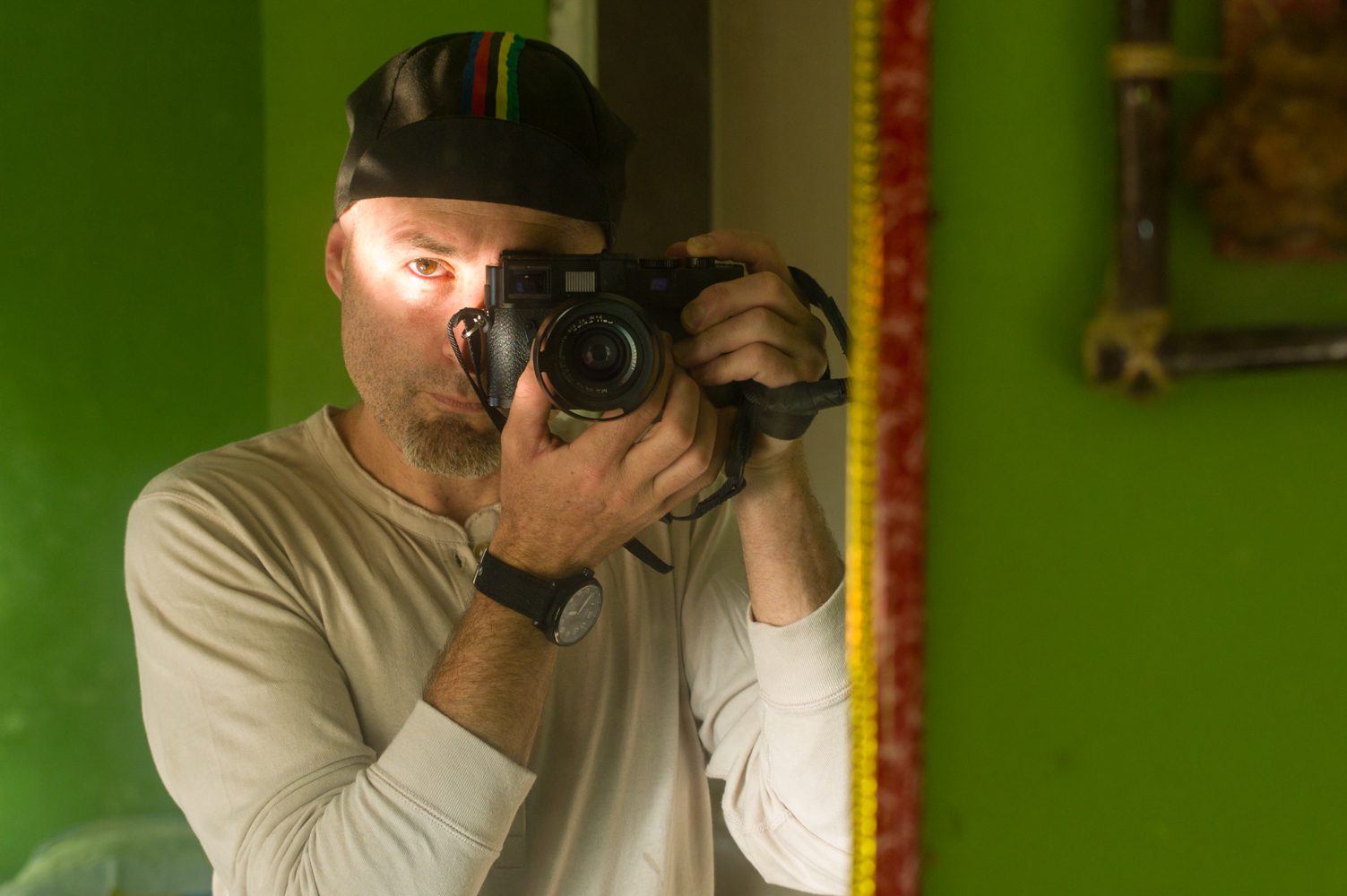
Smooke has lived in San Francisco since 1993. He has worked as a photojournalist and videographer, editor of a local community newspaper, and leader of the nonprofit Bernal Heights Neighborhood Center.
Ruiz has reported for U.S. independent media, Canadian mainstream and ethnic media, and the largest daily newspaper in the Philippines.
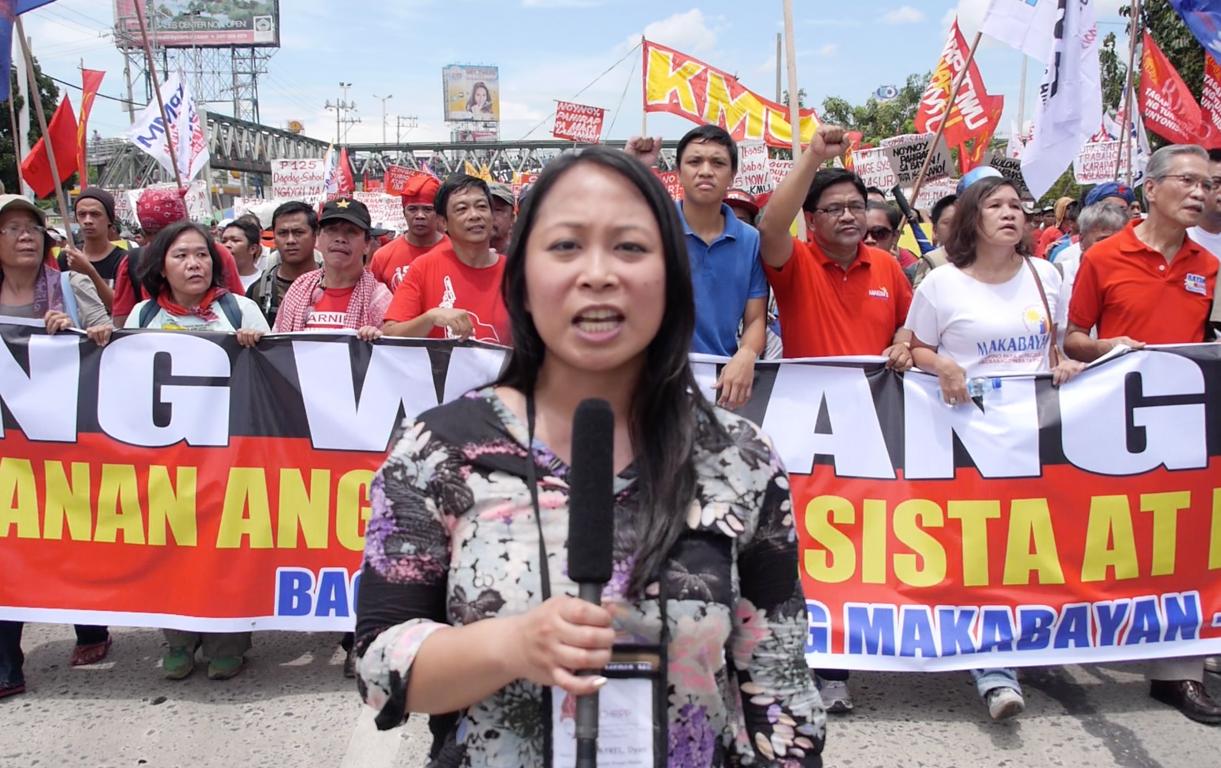
Their nonprofit media outlet, [people. power. media], which they co-founded in 2012, creates content on land use issues facing marginalized and immigrant communities in San Francisco, including Latinos.
They focus on affordable housing, segregation, and environmental justice.
“Through our compelling multimedia journalism, we build broad-based understanding and urgency on land use issues causing a groundswell of people to take action for systemic change,” according to their website.
The Big Idea: An Animated Series on Affordable Housing
Smooke and Ruiz said the average person doesn’t know how complicated housing reform is.
Their media organization is always trying new ways inform the public about how the housing business works, including news videos, live action white board videos, podcast-style presentations, and photo and video essays.
“One aspect of being a new media organization that distributes its content online is that you can constantly experiment with different forms of presentation,” Smooke said.
But what about a full animation?
Animations enable viewers to relate to characters and make difficult concepts easier to understand, Smooke said.
“Cartoon characters have a lot of latitude and they give them a lot of space and allow them to do things we would criticize live action characters for doing,” Smooke said.
In 2017, Smooke and Ruiz decided to pursue an animated series that could inform and inspire action for affordable housing advocacy and reform.
Building a Script and Production for the Animated Series
Because most movies are place-based but people can still relate to the story, and San Francisco has become the example for people around the world for what happens when housing prices get completely out of control, Smooke and Ruiz decided to anchor the story in the place they know best, San Francisco.
They wanted the title of the animated web series to resonate with people everywhere who are struggling with the cost of housing. And they wanted the title to reflect the experience of high housing costs, which typically means that you can no longer afford to live in that place.
They called it, “Priced Out: Why You Can’t Afford a Place in San Francisco.”
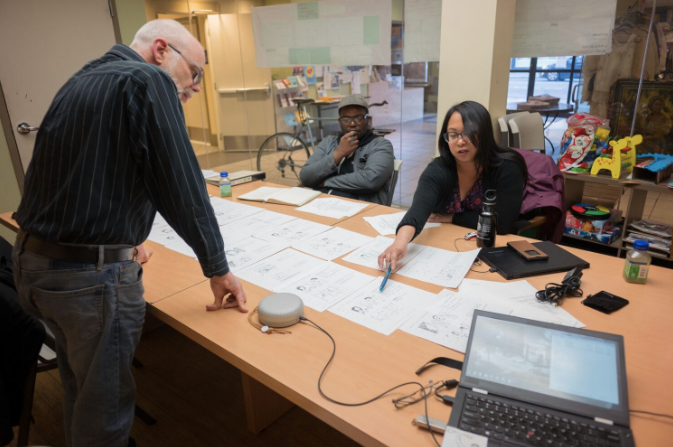
They also held a workshop to get feedback on the script from community members and organizations throughout San Francisco. More than 50 attendees discussed what worked and what needed to be changed. Based on that feedback, Smooke and Ruiz made a number of revisions.
The last stage in the script development was when animators started working on it.
The entire production took two years from start to finish.
Funding for the series came entirely from individuals. They had events, screenings of the storyboards, and sold swag. They also had a crowdfunding campaign through the Seed & Spark platform.
“We couldn’t have done it without a social media specialist Vantage Point SF and a crowd funding specialist, Avenida Productions,” Smooke said. “Our executive producers are acknowledged in the credits—these were the major donors to the project—but there were others as well who asked to remain anonymous.”
‘Priced Out’ Animated Web Series Becomes a Reality
The six-part series started streaming on April 9, 2019, with one video released each week. Smooke and Ruiz also conducted a premiere screening of the animated series for 150 viewers at the Roxie Theater in San Francisco’s Mission District on May 14, 2019.
The full series, Priced Out, is now streaming on YouTube and Facebook:
- Trailer: https://youtu.be/ohCk4rznqO4
- Episode 1: https://youtu.be/sSya366_pUI
- Episode 2: https://youtu.be/evPGyvvtuhE
- Episode 3: https://youtu.be/RE0ejvfcYb0
- Episode 4: https://youtu.be/fW5SoOq0CRw
- Episode 5: https://youtu.be/kFsTQpQEjSw
- Episode 6: https://youtu.be/WGccrS3HgMY
Episode 1 starts when viewers meet the lead characters, Curtis and Riley. Riley is pregnant and works at a tech company. Curtis is a teacher.
A “rent increase” notice sits on the wall of their high rise in San Francisco. They are forced to go house-hunting.
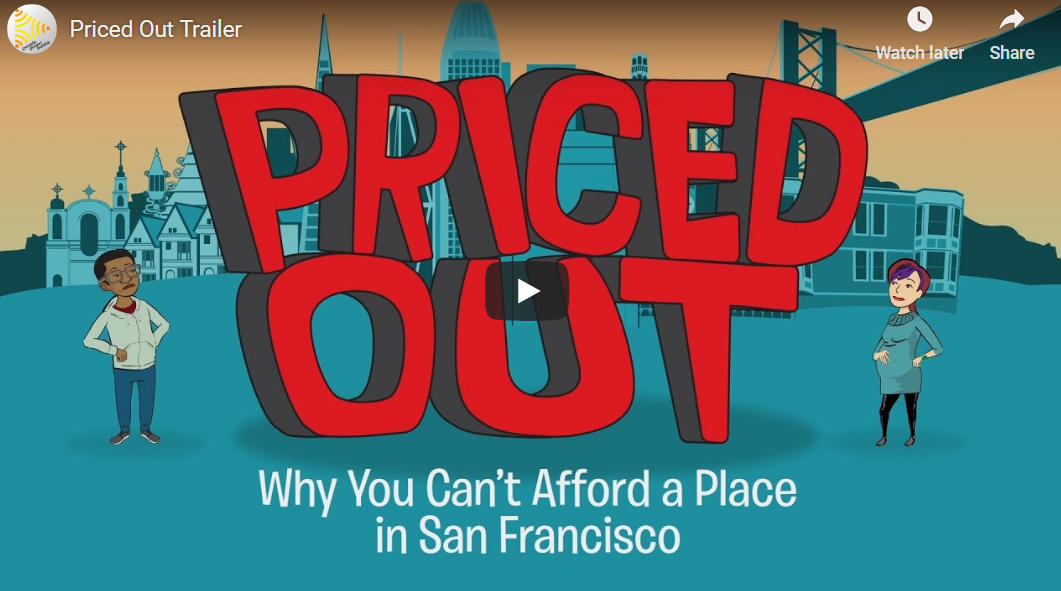 “[Riley] wears one of her new projects on her wrist, a smart watch called ‘Olive’ that is imbued with artificial intelligence, so it has the ability to learn as we follow it through the six episodes,” Smooke said.
“[Riley] wears one of her new projects on her wrist, a smart watch called ‘Olive’ that is imbued with artificial intelligence, so it has the ability to learn as we follow it through the six episodes,” Smooke said.
Olive shares housing statistics that are shocking and daunting for Curtis and Riley.
Curtis suggests they meet with a developer to find out why housing is so expensive.
When they meet with the developer, Sumir, he tells them how he approaches development. He needs to guarantee a return on investment. So if he rents out his units to high-wage earners or for corporate rentals, then he’s made his investors happy. Curtis and Riley ask him why he doesn’t lower the prices of his units even though he’s building so many. Sumir responds that he can’t. He suggests that they talk with Ernesto, the banker who provides financing for Sumir’s construction projects.
When they meet with Ernesto, they learn that the banker reviews developers’ business plans. Ernesto says that if the prices for housing trend downward, the bank will lose interest in that market and instead invest where prices are increasing. Bankers know that expenses will always keep increasing because of inflation, so if revenues are going down because rents or sales prices are decreasing, the developer won’t be able to pay the bank.
Curtis and Riley don’t have time to get demoralized by their quest to find a place in one of the gleaming new condo towers because they get a call from their realtor who wants to show them a flat in an old building in the Mission District.
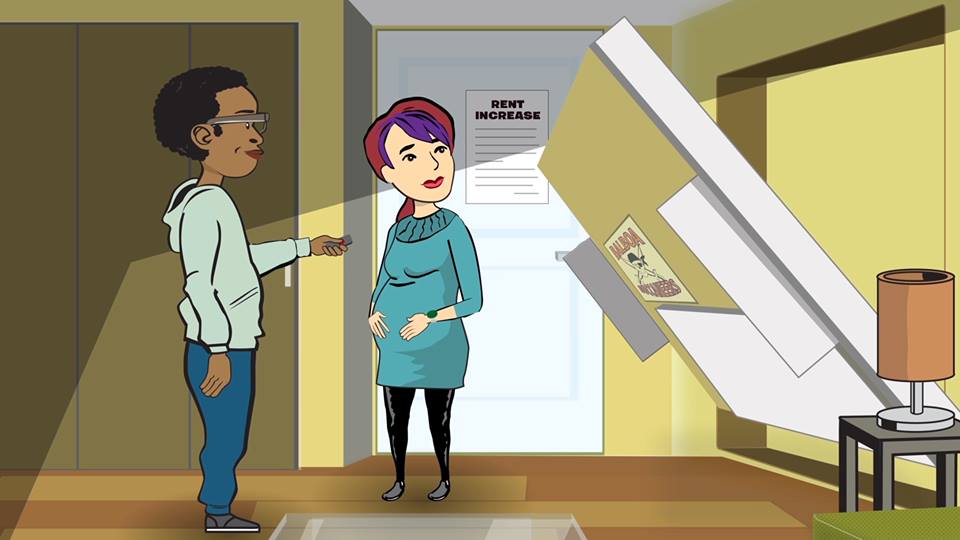
“The murals in the Mission have been important cultural storytellers for the Mission’s Latino residents and businesses for generations, so it was important for us to have a Mission mural come to life to tell the story of how San Francisco became so valuable—to tell us why real estate has gotten so expensive,” Smooke said.
Despite getting the hard sell from the realtor, Curtis and Riley see the doll still in the apartment that belongs to the child getting evicted and reflect on how that connects to the baby they’re about to have.
“Episodes 5 and 6 lead Curtis and Riley from their crisis of realizing that the system is stacked against them, to seeing that there is a way that they can become active to change the system,” Smooke said. “They join a community based contingent to meet with the (fictional) Mayor of San Francisco and challenge her housing policies and priorities.”
Animated Series Gains in Popularity
Priced Out has generated “tons of interest,” Smooke said.
Each episode has been viewed between 1,500 and 2,500 times.
Truthout, a nonprofit media partner of ours, released each episode to their email list of more than one million people, Smooke said.

Probably the biggest “test” came when they screened to more than 100 people at the Housing California conference in April 2019. In the audience were housing policymakers from all over California, affordable housing developers, and those who provide funding for affordable housing.
“The reception was amazing,” Smooke said.
Next Steps for the Web Series (and for Smooke and Ruiz)
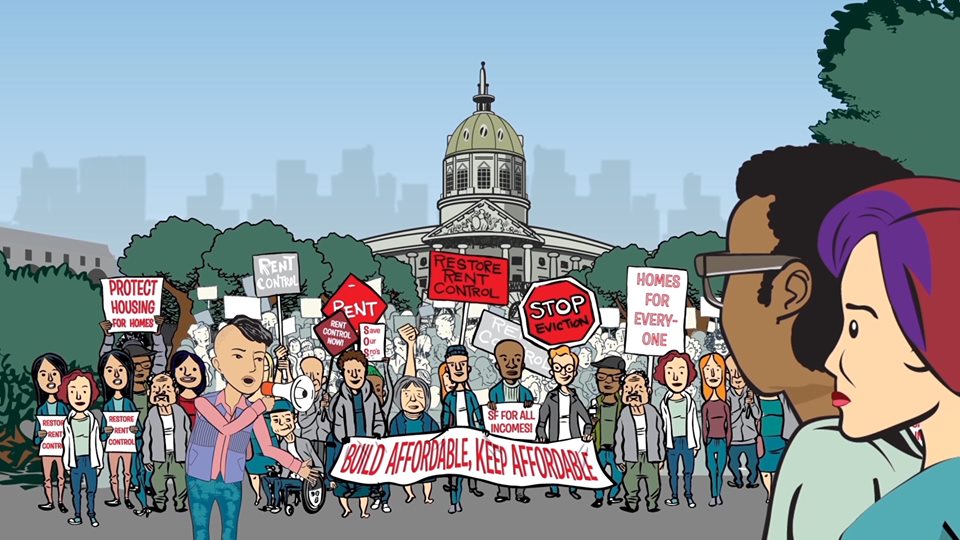
And their advocacy work is far from finished.
The [people. power. media] media outlet, under the guidance of Smooke and Ruiz, will continue to shine a light on housing issues in San Francisco.
The city is facing numerous issues. Aside from affordability, homelessness is a huge issues. Politicians are trying to deregulate city planning and remove the voice of the people. All the while, housing and rent prices continue to rise.
California lawmakers have unveiled a far-reaching package to stem the state’s housing affordability crisis, including new protections against surging rents and evictions as well as more apartments near public transit and in coastal communities.
And, with help from the animated series, Smooke said more reform is possible.
“We hope that Priced Out will help turn the tide so that what’s available for people to live in is actually affordable,” he said. “Everyone needs a place to live, so policies should work to make housing accessible for everyone.”
Don’t stop here, either.
See how you can help improve housing justice for Latinos and all people!
Explore More:
HousingBy The Numbers
56.9
percent
of Latinos are "housing cost burdened"
This success story was produced by Salud America! with support from the Robert Wood Johnson Foundation.
The stories are intended for educational and informative purposes. References to specific policymakers, individuals, schools, policies, or companies have been included solely to advance these purposes and do not constitute an endorsement, sponsorship, or recommendation. Stories are based on and told by real community members and are the opinions and views of the individuals whose stories are told. Organization and activities described were not supported by Salud America! or the Robert Wood Johnson Foundation and do not necessarily represent the views of Salud America! or the Robert Wood Johnson Foundation.


